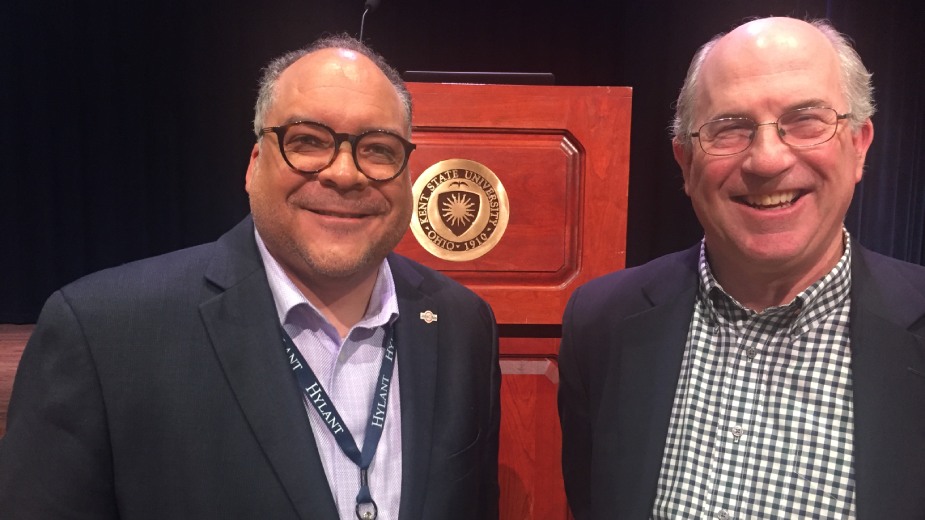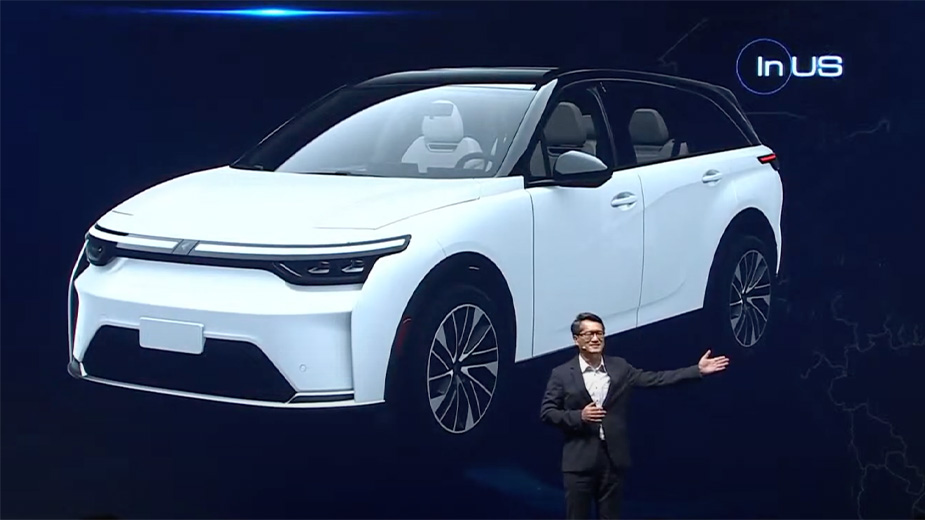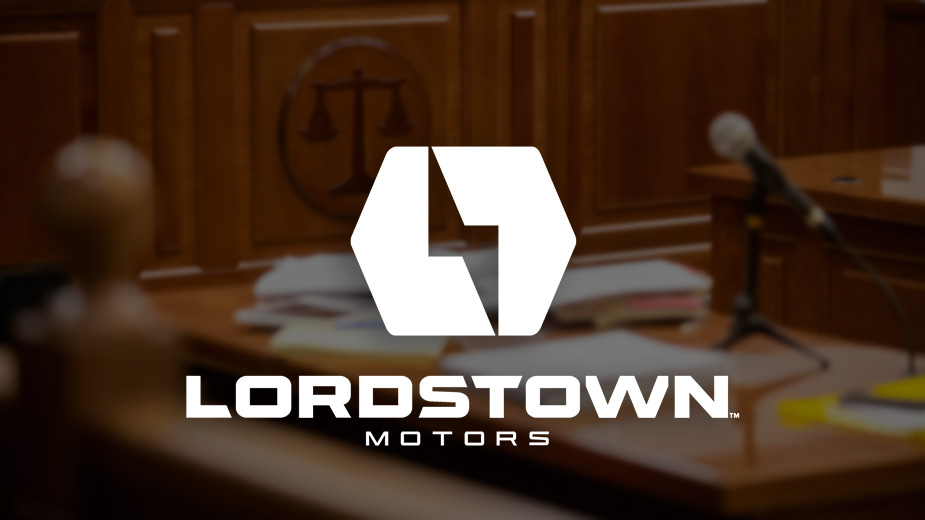EV Conference Focuses on NE Ohio Supply Chain
KENT, Ohio – The electric vehicle revolution is on its way, and it’s coming faster than anyone had anticipated.
Still, companies across northeastern Ohio are eager to assess where they fit into this nascent, but rapidly accelerating, industry. Failure to do so could mean missing out on transformational business opportunities as the regional economy begins to shift.
That’s largely the consensus of speakers and panelists who shared their thoughts at the Northeast Ohio Manufacturing for Electric Vehicles Conference Wednesday.
Approximately 350 executives and representatives from manufacturers, suppliers, service vendors, information technology firms, development agencies and academia turned out for the event, held at Kent State University.
“We thought it would be beneficial to the region to put on an event that helped whet people’s appetite and their interest,” said Jay Foran, senior vice president, industry and innovation at Team NEO, one of the conference’s partners.
At stake is a piece of the projected $400 billion EV supply chain nationwide, and officials are convinced that this region – steeped in legacy manufacturing in both automotive and aerospace — is poised to capture a significant chunk of that market.
The day-long conference was sponsored by Team NEO and JobsOhio; KSU; the Manufacturing Advocacy and Growth Network, or Magnet; Brite Energy Innovators; the Youngstown Business Incubator; Manufacturing Works; and JumpStart.
“The forecast is massive in terms of the number of new programs, the number of new vehicles,” said Todd Dubner, partner and head of industrial manufacturing strategy for KPMG’s U.S. office in New York. Over the last several years, he said about 20 new EVs have been announced, but another 160 globally are slated to be unveiled over the next five years.
“It’s a stark reminder of how competitive and choppy this market is likely to be in the next couple of years,” he said.
This opens the market for potential suppliers for EV motors, for example, as content for traditional internal combustion engine parts declines over the coming decades, he said.
Opportunities for manufacturers also exist in developing an EV charging network, Dubner said. “Some analysts are calling for 2.5 million or more charge points to support the volume of EV’s being discussed,” he said. “That means quite literally hundreds of thousands of chargers being made each year over the next many years.”
Northeastern Ohio is especially fit for supplying the EV space, since every component used in a vehicle could be produced from a company in the state, said Jonathan Bridges, managing director, automotive, for JobsOhio, the state’s development arm.
“Every commodity that you would want in a vehicle, you can find in Ohio,” he said.
And, the existing workforce in the state not only understands manufacturing, but could also transition from manufacturing traditional auto products to future ventures such as EVs and hybrid vehicles.
“What we are doing is supporting those companies supplying the industry currently, helping them transition when possible,” Bridges said. However, JobsOhio is also talking to global corporations involved in the EV supply chain to find out what it would take to bring them into the state, he said.
“We’re seeing this industry grow, we’re seeing this industry gravitate to us,” he said. “If you aren’t in that space yet, I’d caution you to at least consider.”
Some companies with a history of supplying traditional original equipment manufacturers have already made the leap to the EV and hybrid market.
Schaeffler Group, a manufacturer that produces bearings and other engine components for mostly the traditional auto industry, is today manufacturing parts for the hybrid market, said Jeff Hemphill, the company’s chief technical officer.
Many of those components the company produces today for engines are likely to be phased out as electric motors become the standard in the future, he said.
Schaeffler projected several years ago that by 2030, electric vehicles would make up 30% of the automotive market, 40% would be made up of hybrids, and another 30% would be vehicles with conventional engines.
Still, that means 70% of those vehicles would have some sort of internal combustion engine by 2030, he said. “Hybrids are going to be very important,” Bridges said.
Battery costs, however, have dropped dramatically and capacity has increased since the early 1990s, making EVs more attractive and affordable. As these costs drop and battery capacity continues to increase, it is likely EV adoption will accelerate at a dramatic clip, he noted.
“Don’t be afraid to innovate boldly,” he told the audience.
Another long-time Cleveland company, Lincoln Electric, is also making its move into the EV space, said Steve Sumner, vice president of global equipment.
EV sales account for just 4% of sales nationally, said Edgar Faler, senior industry analyst at the Center for Automotive Research, based in Ann Arbor, Mich. Yet it’s projected that sales will grow at a rapid clip, driven by new models that are coming on line in the near term.
As new models roll out, additional battery cell and battery assembly plants are necessary to support this growth, Faler said. Suppliers will be required to support these plants as well, he said.
“What we’re finding is that within a 350-mile radius is important from a logistics standpoint,” he said. “So Ohio is well situated in this corridor.”
Ohio benefits from the $2.3 billion Ultium battery cell manufacturing plant now under construction in Lordstown, plus the prospect of Lordstown Motors Corp.’s partnership with Foxconn.
“What’s very important is that we’re in the early stages in seeing this ecosystem evolve around electric vehicle assembly plants and battery assembly plants as well,” he said.
Bill Koehler, Team NEO CEO, said events such as these help to engage business leaders and company executives with the changing dynamics of Ohio’s economy.
“EVs and the Youngstown market is a critical aspect to that, as are lightweighting and additive manufacturing,” he said.
“Grounding all of that will be access to talent — we can’t deploy technology if we don’t have engineers, we don’t have enough chemists,” Koehler said. “And that’s why institutions such as Youngstown State University and Kent State University are so important.”
Pictured at top: Jonathan Bridges, managing director, automotive JobsOhio; Bill Koehler, CEO of Team NEO.
Copyright 2024 The Business Journal, Youngstown, Ohio.



